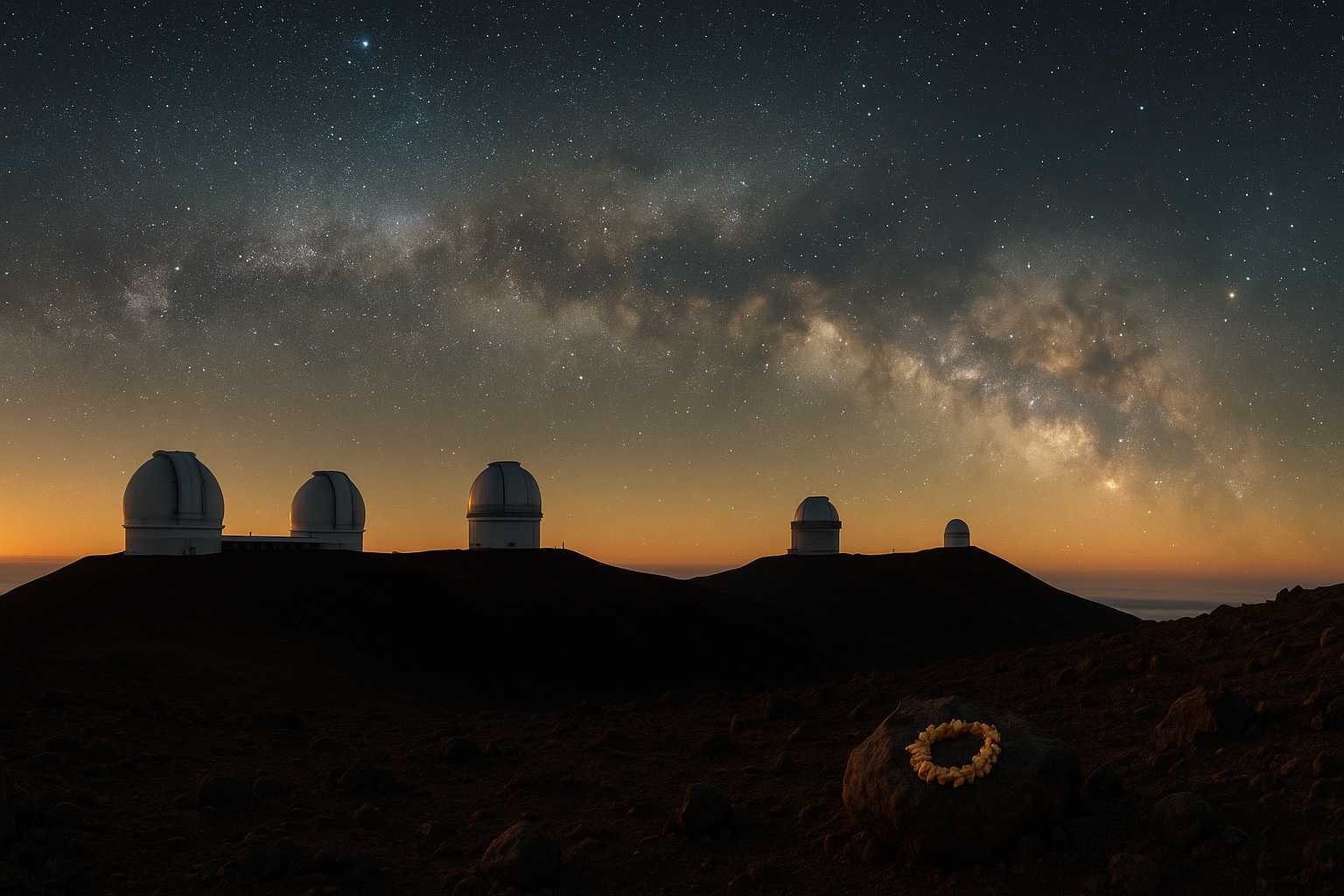Atop the windswept summit of Hawaii’s tallest mountain, Mauna Kea, stands one of the world’s premier sites for astronomical observation. With its dry air, stable atmosphere, and minimal light pollution, Mauna Kea is an unrivaled window into the depths of the universe. Over the decades, its observatories have shaped both our understanding of the cosmos and the way we conduct astronomical research.
A Unique Location
Standing 4,207 meters (13,803 feet) above sea level, Mauna Kea’s summit sits above 40% of Earth’s atmosphere by mass. Its isolation in the middle of the Pacific Ocean means clear, dark skies year-round, making it a sought-after location for telescopes of all types, including optical, infrared, and submillimeter observatories.
Pillars of Modern Astronomy
Among the most notable facilities on Mauna Kea are the Keck Observatory, with its twin 10-meter optical/infrared telescopes, and the Subaru Telescope, Japan’s flagship in optical-infrared astronomy. Also atop the summit are the Canada-France-Hawai‘i Telescope and the James Clerk Maxwell Telescope, which observe in optical and submillimeter wavelengths, respectively. These facilities have together contributed to groundbreaking discoveries, from the detection of exoplanets to the mapping of distant galaxies and the study of supermassive black holes.
Scientific Milestones
The Keck telescopes’ adaptive optics systems—technology that corrects for atmospheric turbulence in real time—have set new standards for sharpness in ground-based astronomy. Observations from Mauna Kea’s telescopes were pivotal in confirming the acceleration of the universe’s expansion, a finding that led to the 2011 Nobel Prize in Physics.
Respecting Environment and Culture
While its summit is scientifically invaluable, Mauna Kea is also sacred to Native Hawaiians, who view it as a place of spiritual significance. These dual identities have sparked important dialogue concerning stewardship of the land, balancing innovation with respect for indigenous culture and environmental preservation.
Looking Ahead
Several planned projects, such as the Thirty Meter Telescope (TMT), continue to highlight Mauna Kea as a focal point in the evolution of astronomical research, though future development remains contingent on community engagement and environmental review.
Through a blend of cutting-edge technology, collaboration, and dialogue, Mauna Kea observatories continue to bridge our terrestrial vantage point and the vast reaches of the cosmos.


Leave a Reply